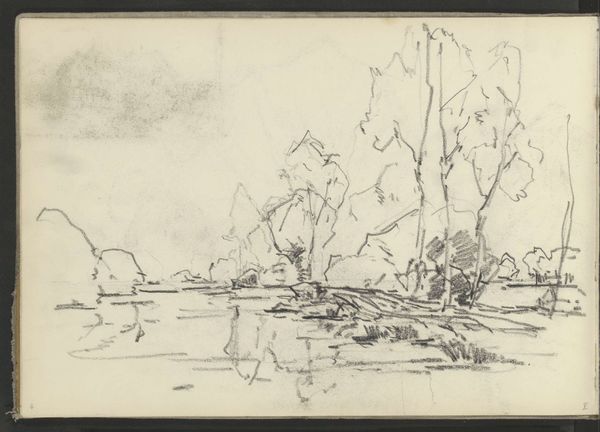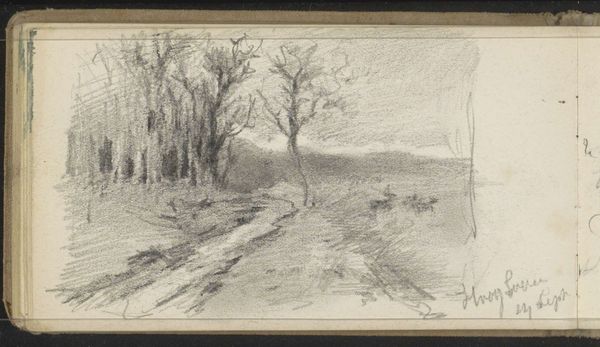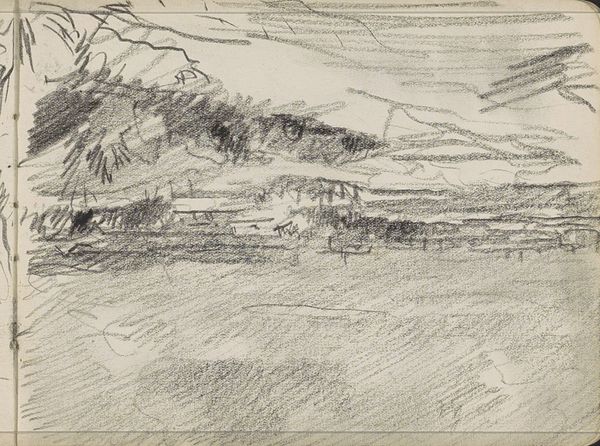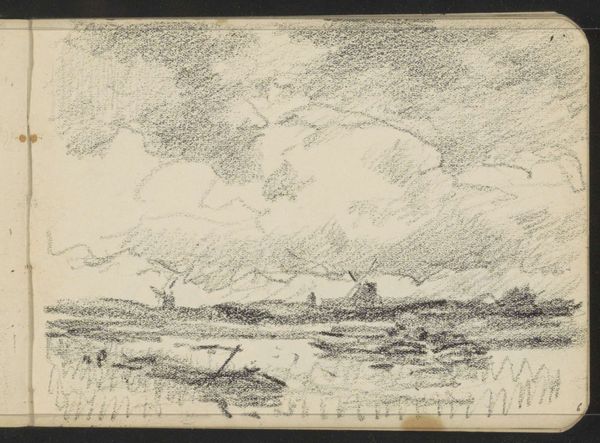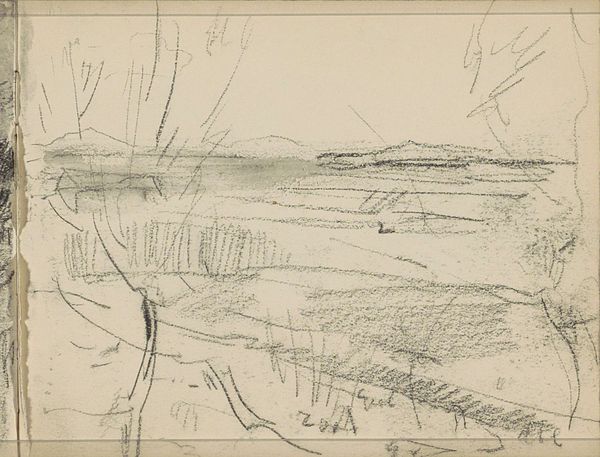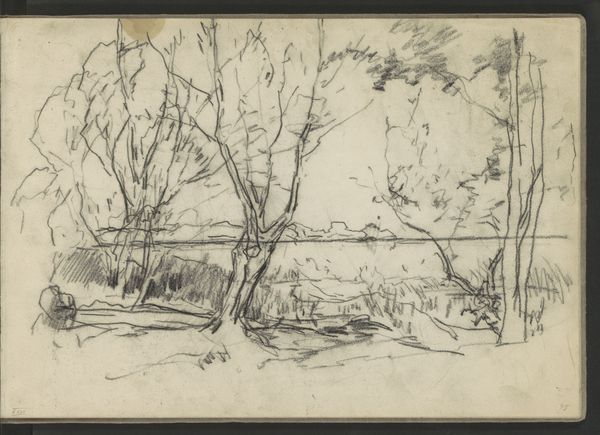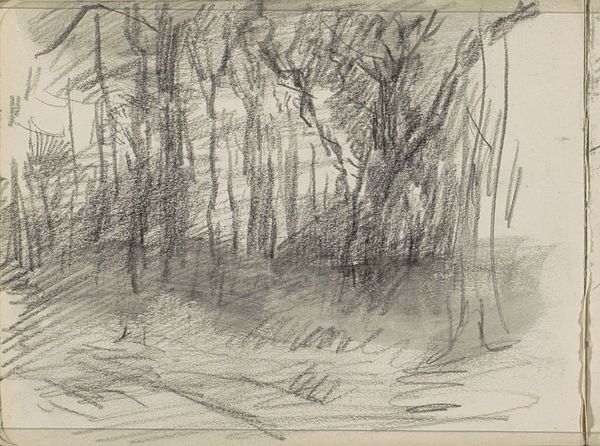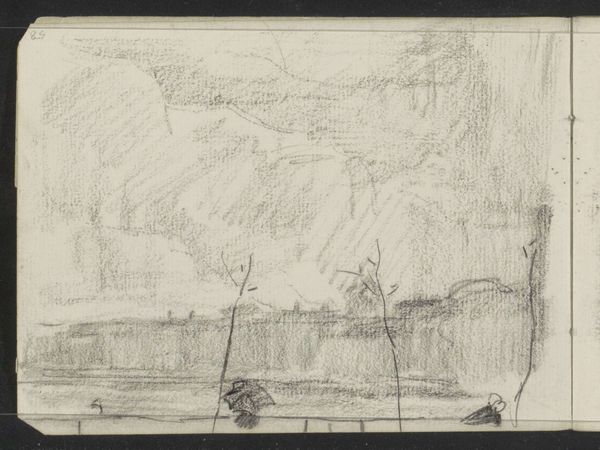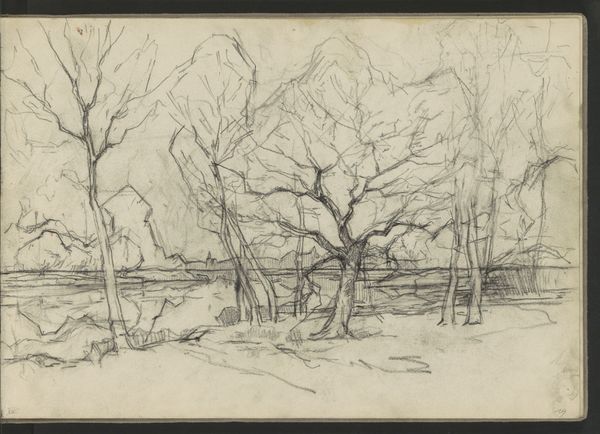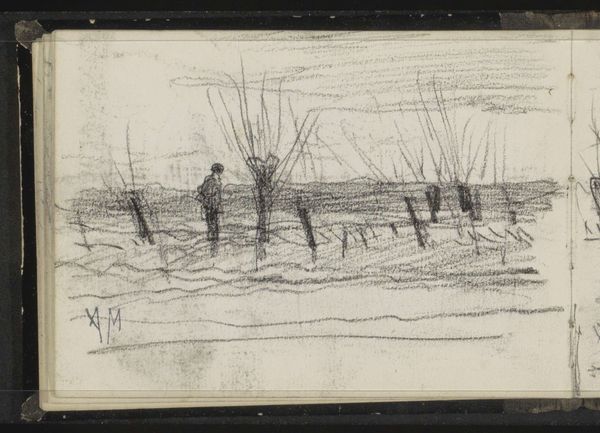
drawing, pencil
#
drawing
#
dutch-golden-age
#
sketch book
#
landscape
#
sketch
#
pencil
#
realism
Copyright: Rijks Museum: Open Domain
Editor: This is "Knotwilgen en een hek bij een vaart" – or "Pollard Willows and a Fence by a Canal" – a pencil drawing by Anton Mauve, made sometime between 1848 and 1888. It's currently housed in the Rijksmuseum. There's a quiet simplicity to this sketch; I almost feel like I'm peering into the artist's private thoughts. What strikes you when you look at it? Curator: What stands out is its immediacy. We see Mauve engaging with the Dutch landscape, not as a detached observer, but as someone embedded within a specific social and artistic milieu. Sketches like this were integral to the development of Realism. Consider the art world at this time – the mid-19th century. How do you think this drawing reflects, or perhaps resists, the prevailing artistic trends and the social changes happening then? Editor: Well, I can see how it might relate to Realism; it's a very direct and unromantic depiction of the countryside. It feels very different from the grand historical paintings that were popular back then. Curator: Precisely! Mauve and his contemporaries sought to depict everyday life, democratizing art. Look at the humble subject matter: willows, a simple fence, a ditch. The art academies at this time pushed idealized versions of nature or historical subjects, but what Mauve does here is to elevate the ordinary and rural, and that in itself makes a political statement about what is valued in art and, by extension, society. It also highlights a shift away from urban settings. Why do you think artists were turning to these landscapes? Editor: Maybe there was a growing awareness of the impact of industrialization and urbanization? A desire to reconnect with something perceived as more authentic? Curator: That's certainly a significant part of it. These landscapes were becoming powerful symbols of national identity, of a connection to the land. And, if you think about it, representing these subjects with such apparent lack of artifice suggests a certain honesty, doesn't it? How do you see that playing into Mauve’s later works, given his prominent position in the Hague School? Editor: That makes a lot of sense. It really highlights how even a simple sketch can be connected to broader cultural movements and social values. Curator: Exactly. These quick sketches formed a cornerstone of that whole movement.
Comments
No comments
Be the first to comment and join the conversation on the ultimate creative platform.
